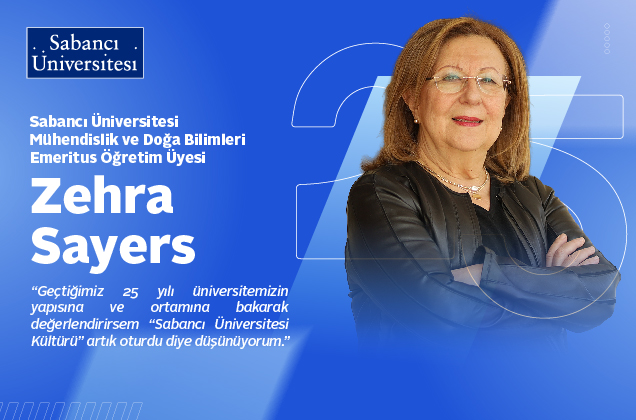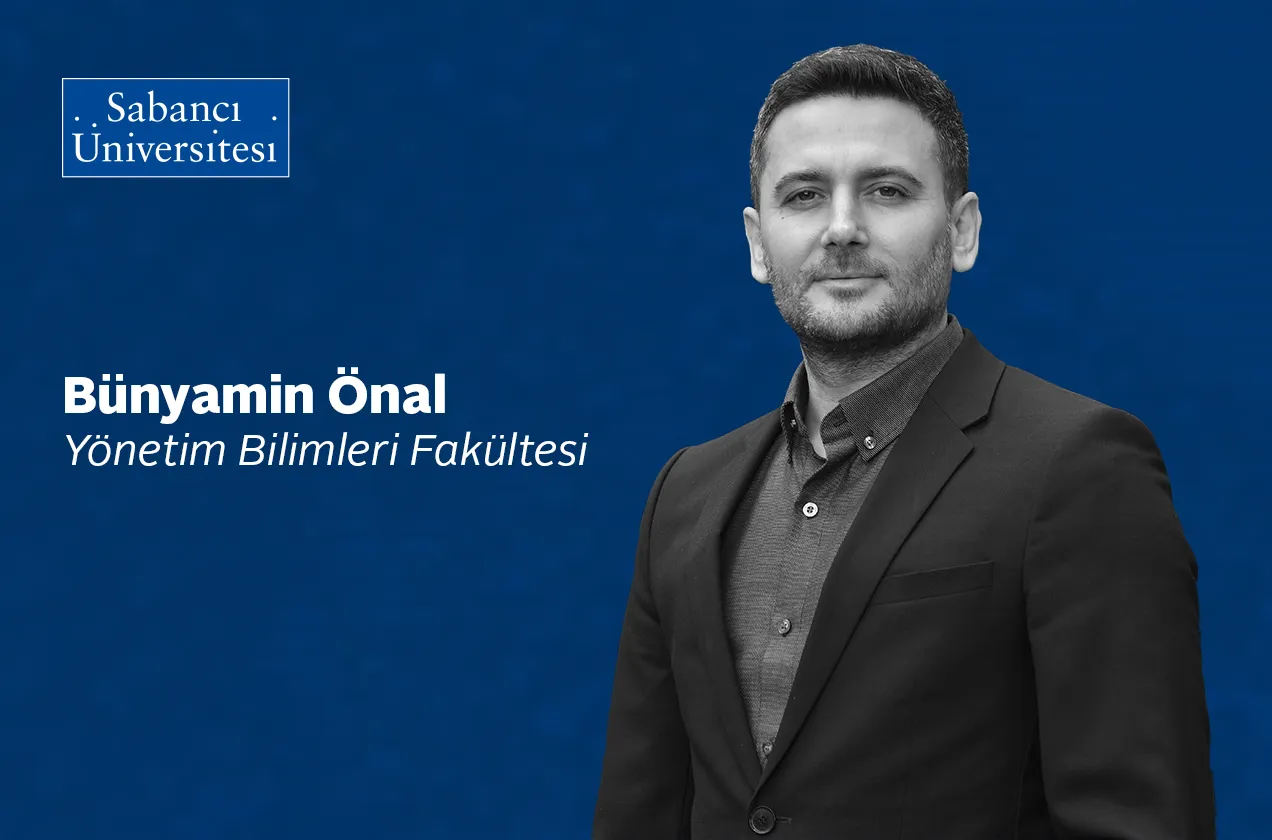07/08/2025
A Look at Our University's 25-Year History from Zehra Sayers
Prof. Dr. Zehra Sayers, one of our professors who has witnessed the history of our university since its founding, answered our questions and shared her memories of the past 25 years with us.
Can you briefly introduce yourself? How many years have you been at Sabancı University? Could you tell us about your work?
I graduated from the Physics Department of Boğaziçi University. Later, during my doctorate at the University of London, I began focusing on biophysics. I worked in England, Sweden, and Germany. In 1998, I joined the Faculty of Engineering and Natural Sciences at Sabancı University as a researcher and one of the founding faculty members.
My research can be categorized under the heading of experimental biomolecular biophysics. I focus on understanding the 3-dimensional structures of macromolecules such as proteins and DNA and unraveling the relationships between structure and function. To give two examples: How does the DNA double helix, which is approximately 2 meters long, fold without knotting and fit inside a cell nucleus with a diameter of 5-20 micrometers? And when a gene is to be expressed, how do enzymes find their target genes in this complex and crowded environment? What consequences arise when DNA's folding pattern is disrupted? Another example is the proteins that transport certain metals needed in the body. When we ingest metals through food, the proteins that transport them to their intended destinations have three-dimensional structures that first bind tightly to the metals and then release them when they reach their destination.To conduct this research, we generally first produce the proteins of interest in the laboratory and determine their biochemical properties. We then determine their atomic structures using various experimental methods (X-ray scattering, spectroscopy, etc.). We test our results by developing models. We are one of the first groups in Turkey to initiate this type of structure-function studies in biology.
During your time at Sabancı University, do you have any interesting memories and/or details you'd like to share about our university?
I have very fond memories, especially from the university's early years. Two come to mind right now. One is the first day students arrived on campus. At that time, only the Information Center, the President’s Office, and a single dormitory were completed and ready for use. The rest was a mud-covered construction site. There wasn't much else around except for a couple of factories, and the surroundings were deserted. On the night of that first day, my husband, Ahmet Evin, and I stayed in a dorm room on campus to be with the students, and we tried sleeping in bunk beds. Another memory is that after our first year, only one student chose the BIO program. This student, Güneş Bozkurt, took some one-on-one classes with us. Fortunately, Güneş, who was also interested in bioinformatics, took some computer engineering courses with other students, getting a taste of the classroom environment.
What distinguishes Sabancı University, which has been around for 25 years since its founding, and what innovations has it introduced to the field of higher education? (Research university, freedom to choose a program, etc.)
In ters of what differentiates us from other universities, I will generally focus on education. Research achievements can be more easily measured, even superficially, by criteria such as international rankings, number of publications, and number of projects. There are no clear criteria for measuring developments and differences in education. The most important criterion is graduates. I believe the most significant feature that distinguishes our university from other universities is the Foundations Development Program. These unique courses under the core curriculum provide students with the opportunity to make more informed career choices, independent of university entrance exams. This is unmatched at any other university in Turkey.
Another key point is our interdisciplinary structure. This is evident not only in the advanced research conducted in our faculties but also in our courses and degree programs.
As a small university, another distinguishing feature is our close academic-student relationships. We successfully achieve this not only through various project activities/courses, but also by keeping professors' offices open to students and sharing numerous social spaces with them.
Of course, we shouldn't forget Sabancı University's non-hierarchical, welcoming, and supportive environment, where academic freedoms—a rarity in the country—are respected.
Our university has achieved a great deal in just 25 years. What can you tell us about its current standing and achievements? Could you share your message about our 25th anniversary?
If I consider the structure and environment of our university over the past 25 years, I believe the "Sabancı University Culture" has become firmly established. When I evaluate this period by looking at our graduates and their career achievements, I am amazed at how much has been accomplished in such a short time.
What are your dreams and expectations for our university's next 25 years?
Looking to the future, I have no doubt that we will continue to innovate in research, as we have always done, with our excellent academic staff, momentum, and enthusiasm. In education, I believe one of the most crucial issues is protecting our broad-minded and flexible education system, which produces highly valued graduates, from the pressures that try to force every higher education institution into the same mold. University education is already undergoing significant changes. We must not abandon the qualities that have made Sabancı University so successful and, when necessary, we must evolve with elements and methods that are beyond the ordinary. Only by preserving our unique qualities can we be more beneficial to society and future generations. I believe we have the power to achieve this.




